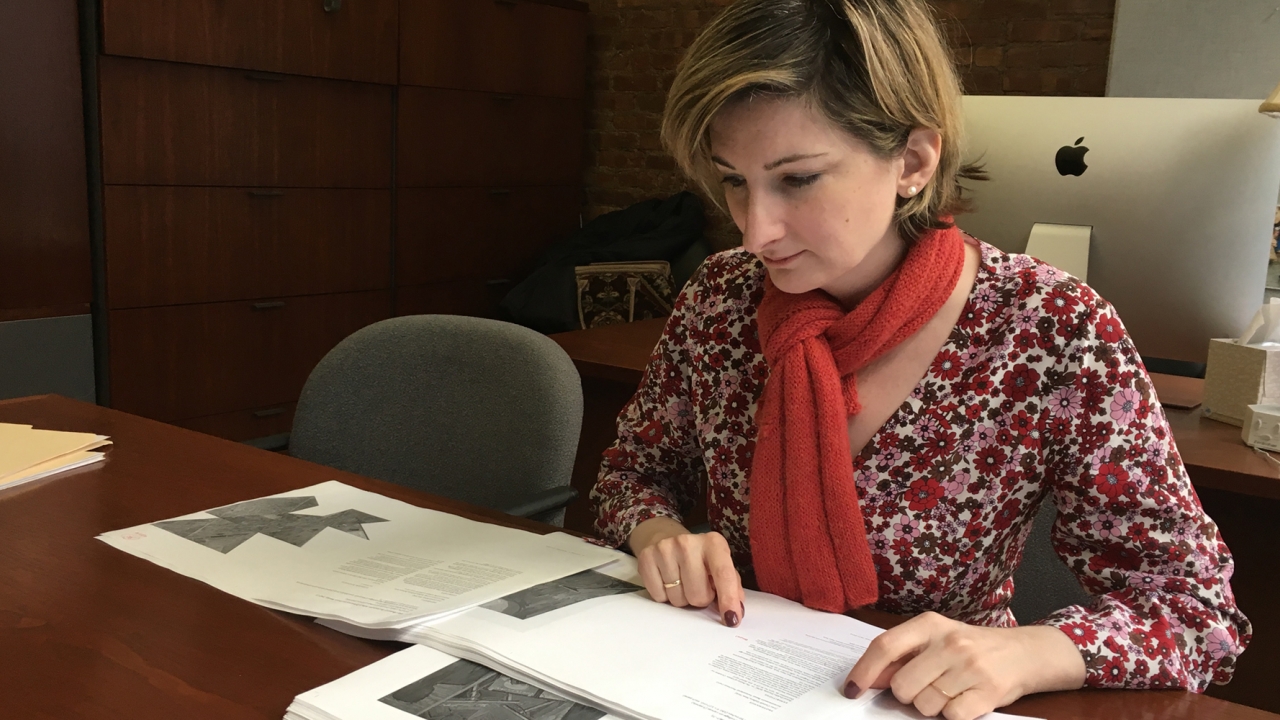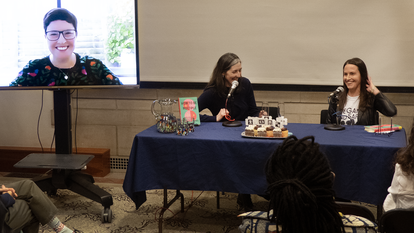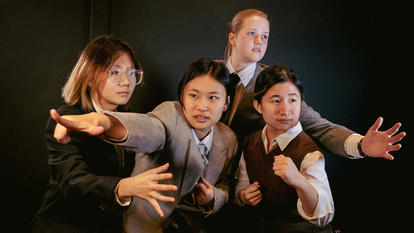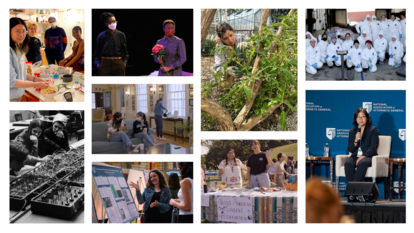New Position for Elizabeth Gorayeb ’97, the Indiana Jones of “Art Nerds”

Elizabeth Gorayeb ’97 was recently named executive director of the Wildenstein Plattner Institute, a new foundation in New York City dedicated to art historical research and digital archiving. In this role, Gorayeb will lead a team of researchers and technology experts in preserving archival records and creating virtual reading rooms around the world. Their first initiative is the publication of the Jasper Johns Catalogue Raissoné.
Gorayeb, previously senior vice president and director of research at Sotheby’s, has led provenance research and restitution projects in London, Paris, and New York, and lectured internationally about her work. She described the foundation’s mission as “a bit like Raiders of the Lost Ark for art nerds.” “I am particularly excited about the stories that we will unearth or rediscover as we take stock of the archival holdings,” she said.
Gorayeb’s own life story was profoundly shaped by her time at Wellesley, she said. A native of Yonkers, N.Y., she first became interested in art history when she was a teenager attending after-school classes in art analysis at the Metropolitan Museum of Art. “The instructors had us look at paintings like Nicolas Poussin’s The Abduction of the Sabine Women and then asked us to describe how the subject related to certain contemporary issues,” she said. “These questions led to many heated debates on ethics, politics, and feminism, and I realized how powerful and manipulative images could be.”
As a first-year at Wellesley, she took a modern art survey course with Patricia Gray Berman, the Theodora L. and Stanley H. Feldberg Professor of Art, who taught students about the power of art to shape people’s ideas about national identity, gender, and the notion of public space. Gorayeb was fascinated with those concepts, and by the works she saw in Wellesley’s Davis Museum. She also took a studio art class as a sophomore, which helped her understand the methodology behind painting.
Despite her keen interest in art, Gorayeb wondered if she should major in history and become a lawyer, as both her parents had done. “I feared I wouldn’t get a job if I tried ‘art historian’ as a career goal,” she said.
The more Gorayeb studied with Berman, however, the more she realized the importance of taking risks and pursuing art, which Gorayeb said can plumb the depth of the human heart and provide people with tranquility, pleasure, and a deeper understanding of our place on the continuum of civilization. “She really set me on my life’s course,” said Gorayeb.
After graduating from Wellesley with a degree in art history, Gorayeb worked as a paralegal at Sotheby’s for a year, which convinced her that she did not want to pursue a career in law. She left to earn a master of art degree at the Institute of Fine Art in New York City, and then returned to Sotheby’s, where she led many significant research projects.
“I do detective work on the ownership history and creation of a work of art, which involves a lot of biographical research, including reading the personal correspondence, stock books, and obituaries of artists and collectors,” she explained.
Sometimes the label on the back of a painting or the inscription carved into the base of a sculpture can reveal more about the history of a work than the actual image does, she said. That proved to be the case several years ago, when Gorayeb was asked to search for a famous painting by Venezuelan artist Arturo Michelena that had been deemed lost for 70 years. After doing intensive research, she learned that the painting had been left, forgotten, in the boiler room of a small museum.
“I am always interested in a juicy or scandalous backstory that leads to in-depth discussions, and a work of art can provide that,” she said. “There are so many stories waiting to be told, and it’s the job of the art historian or researcher to bring that narrative to light.”
Her advice to students who want to pursue art history echoes an idea she heard countless times at Wellesley—“follow your passion”—but with her own twist: “As a college-age worrier, those words did little to reassure me about my chances for employment because the directive is too vague. Instead, I offer this advice: Study what naturally motivates you to work hard, because that is how you prove your talents to potential employers, and how you build a satisfying life.”



